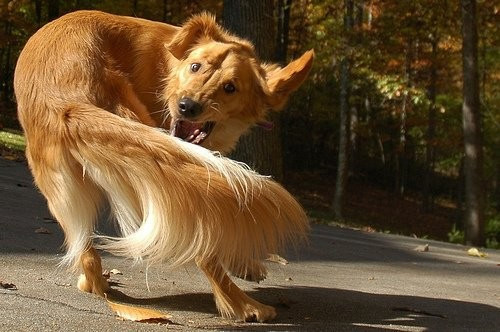Doggie OCD? New Study Claims Your Tail-Chasing Dog Can Have Canine Obsessive Compulsive Disorder

Ever wonder why your dog is chasing its tail? Or exhibiting other bizarre doggie habits like running in circles? It could be that your pup has a canine form of Obsessive Compulsive Disorder (OCD) similar to humans, according to a new study.
OCD, defined as "recurrent, persistent thoughts, such as excessive fears of germs, and repetitive, ritualized behaviors" by Live Science, can often times be signaled by behaviors like compulsive hand washing. But humans are the only ones who suffer, according to a new study by Finnish researchers, who found that canines who chase their tails or bite themselves could actually have OCD.
The University of Kelsinki and The Folkhälsan Research Center used 368 dogs from four different breeds, surveyed the owners and collected DNA samples from 181 of the subjects to test if a particular genetic region was linked to OCD-like habits. However, the team led by Katriina Tiira did not find a genetic nor an environmental influence to the habits,
The team did, though, find that behavioral characteristics in dogs similar to humans. For example, both humans and dogs exude the repetitive OCD behaviors at young ages.
One of the findings in the analysis showed that dogs that received vitamins and minerals exhibited less behavior that could be deemed as obsessive compulsive.
"Interestingly, there are indications that vitamins and minerals have beneficial effects also in human OCD treatment," the study which was published July 26 in PLoS ONE said.
The study also found, similar to humans who develop OCD often times from trauma or stress in childhood, dogs that chased their tails were separated from their mothers earlier than those who didn't chase their tails.
The researchers said they hope their findings in "doggie OCD" can lead them to a better understanding of the disorder in humans.
© Copyright IBTimes 2024. All rights reserved.






















